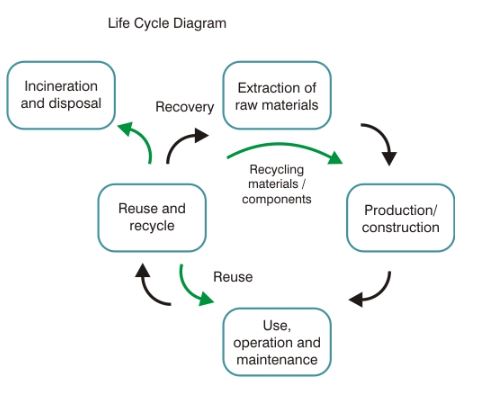Green Procurement
2. What is green procurement?
Green Procurement refers to the acquisition of environmentally preferable products and services, which provide the same or improved function and performance, but are less harmful to human health and the environment than the next best alternative.
Implementing Green Procurement involves incorporating environmental and total cost of ownership (TCO) considerations into procurement decisions along with traditional price, quality, performance, safety and availability. As part of this, a life cycle approach to procurement needs to be adopted that allows for an understanding of the environmental impacts associated with how products are made, where they come from, how they are used and how they will be disposed. For services, it involves looking at how the services are supplied and what options are available to reduce the environmental impact of the service.
The Life Cycle Diagram illustrates the following major steps:
- Extraction of raw materials
- Production / construction
- Use, operation and maintenance
- Reuse and recycle
- Incineration and disposal
What are Environmentally Preferable Products and Services (EPPs)?
EPPs offer the same or improved function and performance as other comparable products and services, but with reduced impacts on human health and the environment across their life cycle. EPPs may have some of the following characteristics:
- makes efficient use of energy, water and/or resources;
- reduces waste and optimizes the use of consumables;
- reduces pollution and emissions;
- reduces the use and/or content of hazardous/toxic substances;
- is reusable or contains reusable parts;
- is recyclable (in whole or in part) and/or contains recycled materials;
- incorporates optimal packaging and/or packaging take-back;
- incorporates responsible end-of-life handling, decommissioning and/or take-back;
- has a long service life and/or can be economically repaired, refurbished or upgraded; and
- complies with the latest environmental legislation, if applicable.
